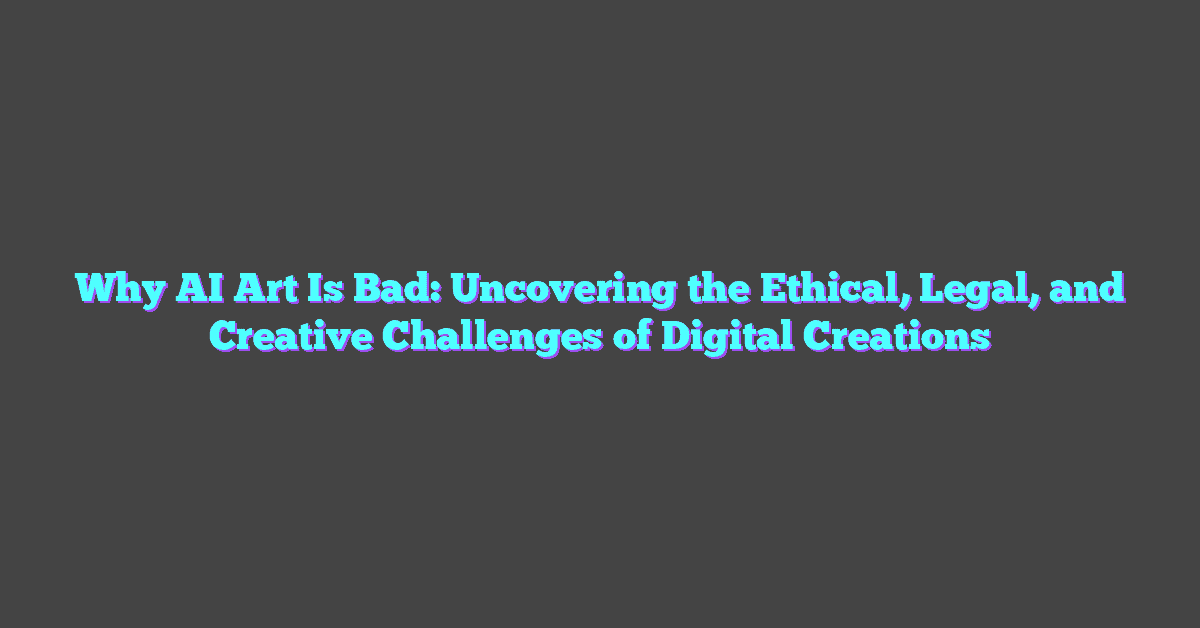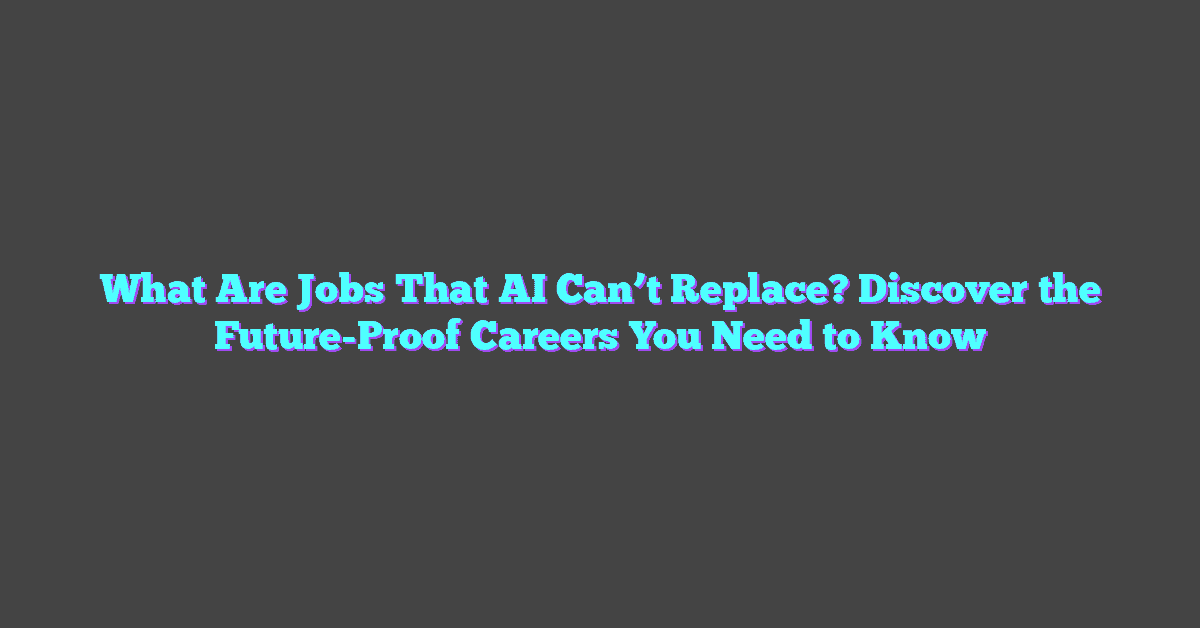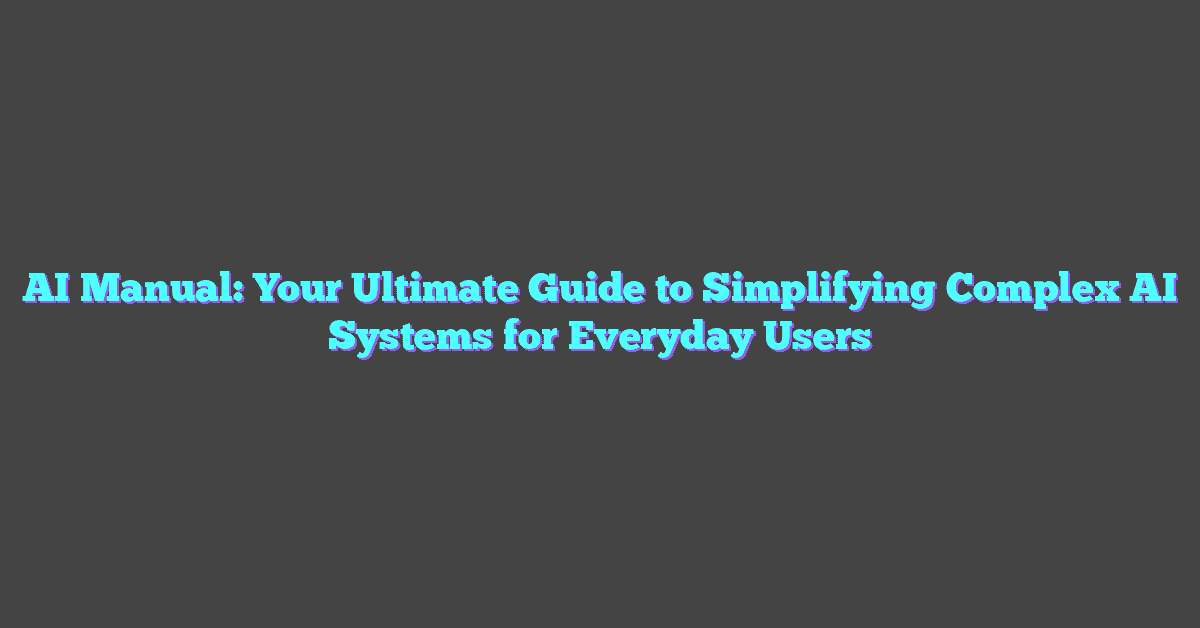AI art might seem like a groundbreaking innovation, but it’s not without its downsides. While it promises creativity at the click of a button, it raises significant concerns about authenticity and originality. Many artists feel that AI-generated art undermines the value of human creativity and the countless hours spent mastering their craft.
Moreover, AI art can perpetuate biases present in the data it’s trained on, leading to problematic and sometimes offensive outputs. This not only affects the quality of the art but also raises ethical questions about the responsibility of those who create and use these technologies. As we dive deeper, it’s clear that AI art, despite its allure, comes with a host of issues that can’t be ignored.
Exploring the Controversy Around AI Art
AI art has sparked significant debate within the artistic and technological communities. This section dives into the key issues surrounding AI-generated art, focusing on ethical concerns and debates over originality and creativity.

Ethical Concerns in AI Art Creation
Ethical concerns in AI art creation stem from various issues, including data sourcing and the potential for bias. AI models often train on vast datasets, which can include copyrighted artwork, raising questions about consent and intellectual property violations. According to a study by Harvard Law Review, the unlicensed use of artwork in training datasets can lead to legal conflicts.
The potential for bias in AI-generated art is another ethical dilemma. AI relies on past data, and if this data contains biased or discriminatory content, the AI may replicate these biases in its outputs. For instance, if an algorithm is trained on images predominantly featuring specific demographics, it might underrepresent others, reinforcing existing social inequalities.
The Debate Over Originality and Creativity
The debate over originality and creativity in AI art centers on whether AI-generated works can genuinely be considered original or creative. Critics argue that AI lacks the emotional depth and experiential context necessary for true creativity. Unlike human artists, who draw on personal experiences and emotions, AI generates art based on patterns and data.
Moreover, originality is questioned because AI art often derives elements from pre-existing works. The replication and combination of styles can lead to derivative outputs rather than truly original creations. According to The Verge, some experts believe that AI art can only mimic creativity but not achieve it.
These controversies reveal that while AI art showcases technological advancements, it also raises significant ethical and philosophical questions.
Impact on Human Artists
AI art’s growing prevalence profoundly affects human artists. It challenges traditional notions of creativity and originality while altering the industry dynamics.
Economic Effects on Traditional Artists
AI-generated art disrupts the economic stability of traditional artists. Increasingly, businesses and consumers opt for AI art due to its cost-effectiveness and speed. This shift reduces commissions and sales opportunities for human artists, affecting their livelihood. A survey by the Art Market Report highlighted that 68% of artists experienced a decline in commissions after AI art became mainstream. Furthermore, AI platforms offer subscriptions or licenses at a fraction of the cost of hiring a human artist, which further impacts economic opportunities.
Artistic Identity and AI Interference
The rise of AI art challenges the concept of artistic identity. Traditionally, an artist’s style and personal experiences shape their work, imbuing it with unique significance. AI-generated pieces, while visually appealing, lack this personal touch. They are products of algorithms trained on existing datasets, blending styles without true originality. For instance, AI can replicate Van Gogh’s style but cannot recreate his emotional and psychological depth. Consequently, the increasing prevalence of AI art may lead to a homogenization of styles, making it harder for individual artists to stand out and maintain their unique artistic identities.
The Question of Quality and Emotional Depth
Many question whether AI-generated art measures up to human-created art in terms of quality and emotional depth. Experts in artificial intelligence and machine learning often find significant differences when comparing the two.
Comparisons Between AI-Generated and Human-Created Art
AI-generated art frequently lacks the nuanced detail found in human-created art. Human artists employ techniques honed over years of practice, resulting in artwork that diverges significantly in style, texture, and emotional expression. AI art, driven primarily by algorithms, often tends to produce work that mimics existing styles and patterns but fails to introduce genuine novelty.
For example, in traditional oil painting, an artist can apply varying brush strokes and layers of paint to create depth and texture. AI, while capable of replicating these features to an extent, often does so in a less intricate way due to its algorithmic nature. This discrepancy in meticulous craftsmanship and the AI’s replication limitations lead to a difference in viewer perception, often favoring human-created pieces.
Can AI Capture Human Emotion?
AI struggles to capture the depth of human emotion. Human artists convey feelings like joy, sorrow, and introspection through personal experiences and their unique lens on the world. These elements manifest in the subtleties of their work – the way light plays in a scene, the choice of color palette, or the abstract representation of complex emotions.
AI-generated art, although technically impressive, lacks this personal touch. Algorithms process vast amounts of data to generate art, but they do so without the subjective experience and emotional baggage that often inform human creativity. As a result, the emotional resonance found in AI art can feel superficial. While AI art can evoke reactions, it rarely matches the intensity or authenticity of emotion that human craft can convey.
Challenges in Copyright and Intellectual Property Law
AI-generated art raises significant questions in copyright law and intellectual property rights. The automation and replication involved introduce complex challenges.
Ownership Issues with AI-Generated Works
Determining ownership of AI-generated art involves navigating a legal gray area. AI, as a tool, lacks the capacity for ownership, leading to questions about who holds rights to the created works. An AI’s output can mimic existing styles or merge multiple influences, making it difficult to ascertain originality or ownership. Current copyright laws generally attribute authorship to human creators, leaving AI-generated art in a nebulous state. If an AI is trained on copyrighted content, concerns also arise regarding derivative works and infringement.
Legal Challenges for Artists and Developers
Artists and developers face legal hurdles that complicate the integration and use of AI in creative fields. Artists may struggle to protect their original works from unauthorized AI-generated replicas. This diminishes the value and authenticity of human-created art. Developers must navigate intellectual property laws to ensure that their AI models do not infringe on existing copyrighted materials. They need to address permissions and licensing for the datasets used to train their models. Regulatory frameworks are still developing, creating uncertainty and potential legal risks.
Conclusion
AI art stirs up a whirlwind of ethical and legal questions that can’t be ignored. While it opens new doors for creativity, it also blurs the lines between human and machine-made art. The lack of emotional depth and originality in AI-generated pieces raises concerns about the future of artistic expression. Moreover, the legal complexities surrounding ownership and copyright only add to the confusion. It’s clear that as AI continues to evolve, society must carefully consider its impact on the art world and develop frameworks to address these pressing issues.
Frequently Asked Questions
What are the main ethical concerns surrounding AI art?
The main ethical concerns include issues of originality, creativity, data sourcing, biases, and the reproduction of existing artworks. These raise questions about the authenticity and emotional depth of AI-created art compared to human-created art.
How does AI art impact human artists?
AI art challenges traditional notions of creativity and artistic identity. It may lead to a homogenization of styles and could potentially undermine the value and recognition of human artists’ work.
What are the copyright and intellectual property issues with AI-generated art?
Copyright and intellectual property challenges include questions of ownership, originality, and legal hurdles faced by artists and developers. The legal gray area surrounding ownership and derivative works is a significant concern, requiring new regulatory frameworks.
Can AI art be considered truly original?
The originality of AI art is debatable. While AI can generate novel pieces, it often relies on existing data and patterns, leading some to question whether it can truly create something original or just derivative works.
What is the legal status of AI-generated works in terms of ownership?
The legal status of AI-generated works is currently uncertain. Traditional copyright laws do not clearly address whether the creator of the algorithm, the user, or the AI itself owns the rights to the artwork.
How do biases in data affect AI-generated art?
Biases in data can influence AI-generated art by perpetuating stereotypes or reflecting the biases present in the datasets used. This can impact the diversity and representation in the output of AI art.
What solutions exist for addressing copyright issues in AI art?
Potential solutions include updating existing copyright laws, creating new legal frameworks, and possibly recognizing AI art as a distinct category with specific regulations. Collaboration between legal experts, artists, and technologists is essential.
Are there any regulatory frameworks currently addressing AI art?
As of now, there are few regulatory frameworks specifically addressing AI art. Ongoing discussions and proposals aim to create guidelines and laws to manage the complexities of AI-generated works.
How might AI art lead to the homogenization of styles?
AI art often relies on existing styles and patterns, which can result in similar outputs across different works. This reliance on past data can stifle innovation and result in a lack of diversity, leading to homogenized styles.
What role do developers play in the creation of AI art?
Developers create and refine the algorithms that generate AI art. Their decisions regarding data selection, algorithm design, and ethical considerations significantly influence the final output and its impact on the art world.




